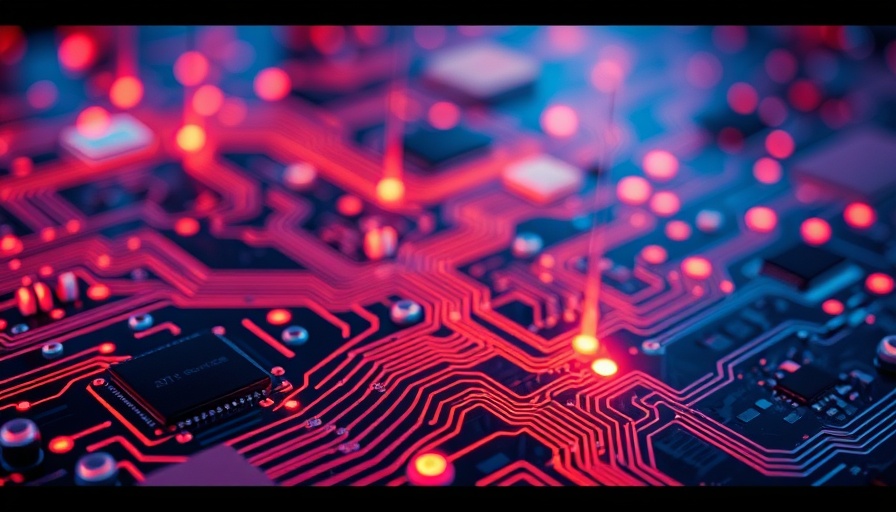
Revolutionizing PCB Design: The Role of AI
In the realm of electronic design, printed circuit boards (PCBs) serve as the backbone of every gadget, from your smartphones to aerospace technologies. Yet, despite advances in technology, PCB layout remains one of the most arduous and labor-intensive tasks in hardware development. In recent conversations, particularly highlighted in the AI in Business podcast with Alain-Sam Cohen from InstaDeep, there’s been a significant focus on how artificial intelligence (AI) is set to transform PCB designs through innovative optimization methods.
Understanding the Complexity of PCB Layouts
Today’s devices demand more from their PCBs, requiring intricate layouts that support multi-layer designs and diverse signal types, all while adhering to strict thermal and manufacturing constraints. According to a NASA guide on high-speed PCB design, boards now need to support speeds often reaching multi-gigahertz, emphasizing the complexities engineers grapple with in layout development.
This complexity makes PCB design a multi-variable optimization challenge—where small adjustments can impact thermal, signal, and manufacturability factors. As a result, even seasoned engineers find themselves mired in time-consuming, manual design processes, with studies indicating that up to 50% of the total PCB design time can be consumed in the placement phase alone.
AI's Potential to Streamline the Design Process
Despite the industry’s ongoing reliance on manual and rule-based tools, the tide is beginning to shift. The conversation with Cohen reveals that AI, particularly reinforcement learning (RL), can address many of the shortcomings presented by traditional tools. By treating PCB layout as a step-by-step process, these AI models can dynamically optimize placement and routing decisions instead of merely using static rules.
The potential benefits of employing AI in PCB design extend far beyond mere efficiency. Cohen discusses a case where an organization was able to reduce its design process from an entire month to just a couple of days through AI-assisted workflows. Such advancements not only offer dramatic time savings but also empower engineers to focus more on innovation rather than repetitive tasks.
How AI Integration Enhances Existing Workflows
One of the key insights from the podcast highlights AI's ability to maintain a balance between automation and engineering oversight. While AI can take on routine layout work, it allows engineers to define critical constraints and make the ultimate decisions. This balance is crucial for ensuring that innovation is not stifled, even as processes become streamlined.
Moreover, the integration of AI into existing PCB design workflows is being facilitated by modernizing standard design tools. This integration ensures that teams can adopt AI-driven optimization without significant disruptions. The paradigm of faster iterations and boosted return on investment is becoming more attainable as organizations embrace this transformative technology.
The Future of PCB Design with AI
Looking ahead, the PCB design industry stands on the brink of a technological revolution. AI-driven optimization promises significant improvements not just in design speed but also in the quality and reliability of PCBs. As businesses continue to navigate an increasingly competitive landscape, leveraging AI will likely be pivotal in driving innovation and efficiency.
The possibilities are boundless for organizations that embrace these AI methodologies, potentially paving the way for groundbreaking designs that push the boundaries of electronic capacities.
Take Action—Embrace AI in Your Workflows
As the landscape of technology continues to evolve, business leaders should consider how AI-driven strategies can integrate into their operations. Innovations in PCB design offer a glimpse of the future — one marked by enhanced efficiency and creativity. By proactively adopting AI tools, your organization could lead the charge in this next wave of technological advancement.
Listen to Alain-Sam Cohen’s full interview on the AI in Business podcast to uncover more insights on optimizing PCB layouts and beyond. Following these technological advancements can not only enrich your understanding but also keep your business competitive in a rapidly transforming market.
 Add Row
Add Row  Add
Add 





 Add Row
Add Row  Add
Add 


Write A Comment